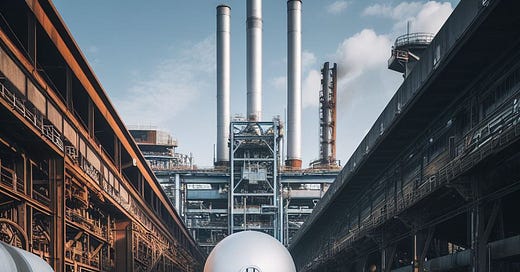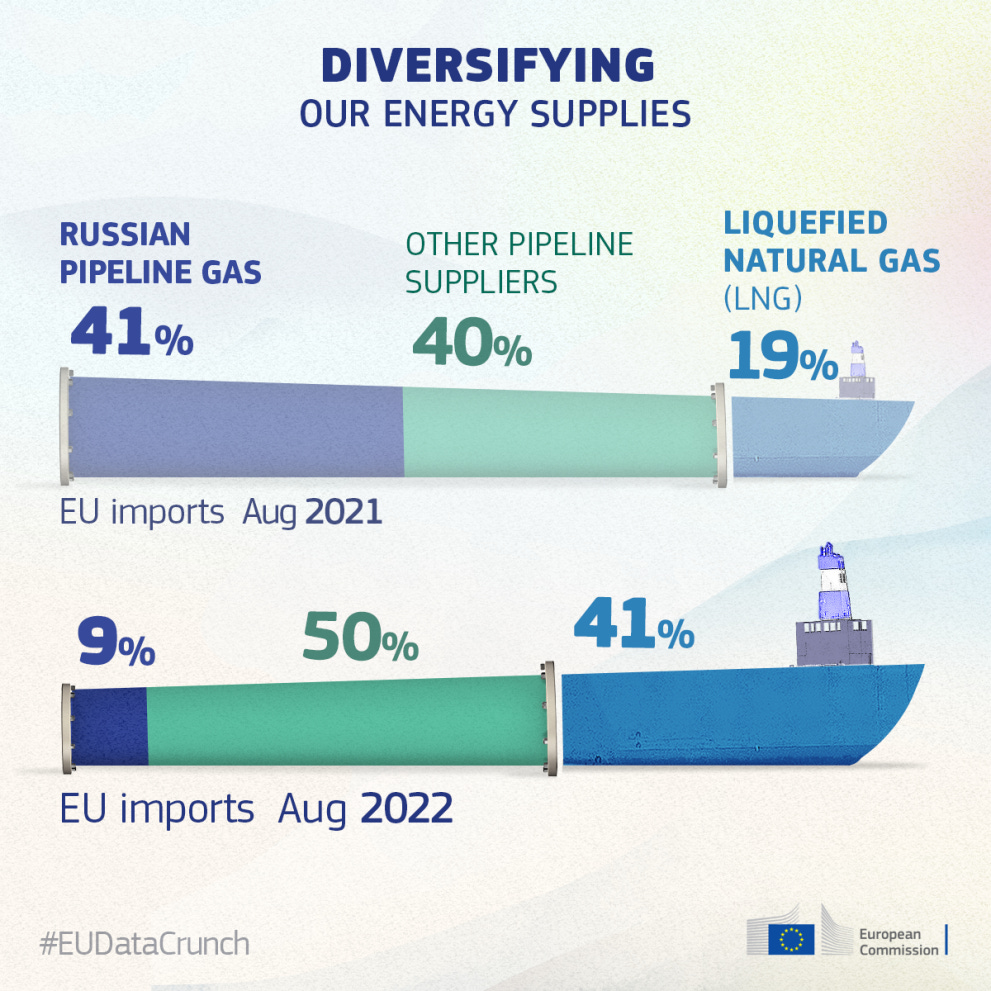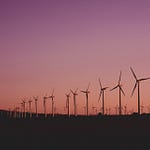As the continent grapples with the repercussions of its heavy reliance on Russian gas, the situation has inadvertently cast a spotlight on alternative energy sources, particularly hydrogen. This editorial explores the extent to which the conflict may accelerate Europe's transition from fossil fuels to renewable energies, such as hydrogen, and the potential economic impacts of such a shift.
The Push Towards Hydrogen
Europe's energy security has been under scrutiny since the conflict began, revealing the fragility of its supply chains and the risks of dependency on a single, volatile source. In 2019, Europe was heavily reliant on Russian gas. According to the International Energy Agency (IEA), the European Union imported around 40% of its total gas consumption from Russia, which amounted to approximately 155 billion cubic meters of natural gas. In 2022, this figure fell to 63 bcm, a decrease of 55%.
The EU is committed to reducing its reliance on Russian gas in the long term. The REPowerEU plan, which was launched in March 2022, aims to double the EU's renewable energy capacity by 2030 and to reduce gas imports from Russia by two-thirds by the end of the year. The urgency to diversify energy has never been more apparent, and hydrogen is emerging as a frontrunner in the race to replace fossil fuels. Hydrogen, particularly green hydrogen produced through the electrolysis of water using renewable energy, offers a clean, versatile energy carrier that can be used across various sectors, including transportation, industry, and heating.
Accelerating the Shift
The REPowerEU plan is the European Commission's response to the Russian invasion of Ukraine and the subsequent energy crisis. It aims to make Europe independent from Russian fossil fuels as soon as possible, while accelerating the transition to clean energy.
The plan is based on three pillars:
Energy savings and energy efficiency: REPowerEU sets a target of reducing energy consumption by 13% by 2030, compared to previous projections. This will be achieved through a range of measures, including mandatory energy efficiency standards for buildings and appliances, and financial incentives to encourage energy efficiency upgrades.
Diversification of energy supplies: REPowerEU aims to diversify Europe's energy supplies by increasing imports of liquefied natural gas (LNG) from other countries and by investing in renewable energy sources such as solar and wind power.
Accelerated deployment of renewable energy: REPowerEU sets a target of increasing renewable energy capacity by 45% by 2030, compared to previous projections. This will be achieved through a range of measures, including simplifying permitting procedures for renewable energy projects and providing financial support for renewable energy development.
The REPowerEU plan is significant because it represents a major acceleration of Europe's transition to clean energy. The plan is ambitious, but it is achievable with the right level of political and financial commitment.
Economic Implications
The transition to a hydrogen economy carries significant economic implications. On the one hand, it requires substantial investment in new technologies, infrastructure, and skills development. The initial costs are high, and the return on investment is long-term. However, these investments also present opportunities for economic growth and job creation. Developing a hydrogen economy can stimulate innovation, foster new industries, and reduce the costs of renewable energy over time.
Moreover, reducing reliance on imported fossil fuels can improve trade balances and insulate economies from price shocks due to geopolitical conflicts. The current situation, with soaring gas prices and energy supply uncertainty, underscores the economic vulnerabilities that come with fossil fuel dependency.
Here are some specific examples of the short-term economic implications of switching to a hydrogen economy in Europe:
Higher energy prices: The cost of producing and transporting hydrogen is currently higher than the cost of producing and transporting fossil fuels. This means that energy prices are likely to rise in the short term as Europe transitions to a hydrogen economy.
Slower economic growth: The high cost of the transition to a hydrogen economy is likely to lead to slower economic growth in the short term. This is because businesses will need to invest in new technologies and infrastructure, which will divert resources from other productive activities.
Job losses in some sectors: The transition to a hydrogen economy is likely to lead to job losses in some sectors, such as the fossil fuel industry. This is because these sectors will be less competitive as the world transitions to a clean energy economy.
Job creation in new sectors: The transition to a hydrogen economy is also likely to create jobs in new sectors, such as the hydrogen production, transportation, and storage sectors. This is because these sectors will need to be expanded to support the growth of the hydrogen economy.
The EU has committed to investing €1 trillion in the hydrogen economy over the next decade. This investment is expected to create millions of jobs and boost the EU's GDP by 1%. However, the EU is also facing a number of economic challenges in the short term, including high inflation and supply chain disruptions. These challenges are likely to make the transition to a hydrogen economy more difficult and costly.
Challenges Ahead
Despite the potential benefits, the transition to a hydrogen economy is not without challenges. The production of green hydrogen is currently more expensive than that of grey hydrogen, which is derived from natural gas. Scaling up production to meet demand and bringing down costs through technological advancements and economies of scale is crucial.
Furthermore, the existing energy infrastructure in Europe is tailored to fossil fuels, and transitioning to hydrogen will require significant modifications. There is also the need for regulatory frameworks that support the hydrogen economy, including standards for production, storage, and distribution.
The long-term effects
Europe's overdependence on imported fossil fuels, particularly from Russia, has exposed its vulnerability to supply disruptions and price volatility. A hydrogen economy offers a solution, reducing reliance on external energy sources and strengthening energy independence. By harnessing domestic renewable energy resources for hydrogen production, Europe can secure a stable and reliable energy supply, shielding itself from geopolitical tensions and market fluctuations.
The current fossil fuel-based energy system is a major contributor to greenhouse gas emissions, exacerbating climate change and its devastating impacts. A hydrogen economy, powered by renewable energy sources, presents a pathway to a sustainable future. Hydrogen's versatility allows it to decarbonize various sectors, from transportation to industrial processes, significantly reducing emissions and mitigating climate change.
The transition to a hydrogen economy will not only reshape Europe's energy landscape but also fuel economic growth and job creation. The development of hydrogen infrastructure, production facilities, and end-use technologies will generate a surge in demand for skilled labor, driving innovation and entrepreneurship. A thriving hydrogen economy will create new industries, boost economic activity, and enhance Europe's competitiveness in the global energy market.
Conclusion
The Russian-Ukraine war has acted as a wake-up call for Europe, highlighting the perils of energy complacency. It has provided a stark impetus to diversify energy sources and accelerate the transition to renewable energies, with hydrogen standing out as a viable, sustainable alternative. While the path to a hydrogen economy is fraught with challenges, the economic and security benefits are compelling. The conflict may well be remembered as a pivotal moment that galvanized Europe's commitment to a cleaner, more resilient energy future.
Interesting Links for this topic
When Russia invaded Ukraine, it became even more clear that the EU needed alternative ways to ensure its energy supply. While it is true that some member states historically imported more Russian gas than others, the consequences of possible disruptions would be jointly suffered by all. This is why it is imperative that all member states are in this together, ready to share gas with their neighbours in case of need.
In 2022, hydrogen accounted for less than 2% of Europe’s energy consumption and was primarily used to produce chemical products, such as plastics and fertilisers. 96% of this hydrogen was produced with natural gas, resulting in significant amounts of CO2 emissions. The priority for the EU is to develop renewable hydrogen and it aims to produce 10 million tonnes and import 10 million tonnes by 2030.
https://energy.ec.europa.eu/topics/energy-systems-integration/hydrogen_en
Europe is much better insulated today against a disruption of gas supplies through Ukraine, even if such an interruption would still hurt. But Europe’s tolerance for such dependence, and Russia’s antics, might be dwindling. That is the front to watch as this crisis unfolds.
https://www.csis.org/analysis/can-european-energy-cope-conflict-ukraine
Most recently, the eagerly awaited Delegated Acts of Renewable Fuels of Non-Biological Origin (RFNBO) were adopted in June. This significant milestone provides regulatory clarity by defining under which conditions hydrogen and hydrogen-based fuels can be classified as RFNBO, as well as establishing the methodology for calculating associated greenhouse gas emissions savings.
The current increase in wholesale energy prices in Europe has prompted governments to put in place measures to shield consumers from the direct impact of rising prices. The purpose of this dataset is to track and give a (non-exhaustive) overview of the different policies used by countries at national level to mitigate the effect of the price spike for consumers.
https://www.bruegel.org/dataset/national-policies-shield-consumers-rising-energy-prices
While preferring 'green' hydrogen (hydrogen produced from renewables like wind and solar electricity) over 'blue' hydrogen ((hydrogen produced from natural gas with carbon capture and storage (CCS) Germany and Norway will likely have to settle for blue, as the green alternative would require huge quantities of wind and solar which are currently missing from the supply options.
In case you missed it:
"BMW has been using hydrogen for a decade" Podcast with Thomas Becker, Vice President of Sustainability BMW
Listen now (15 mins) | Here are some key points about BMW's hydrogen strategy: Hydrogen Fuel Cell Vehicles: BMW has been developing hydrogen fuel cell technology for use in passenger vehicles. They have showcased several concept vehicles and prototypes that use hydrogen fuel cells to generate electricity for propulsion. These vehicles are often referred to as "BMW i Hydrogen N…
















Share this post